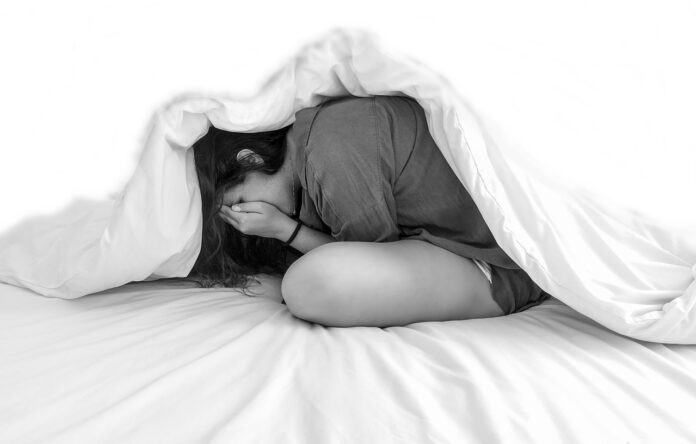Feeling states have two components. The first component is physical. Our bodies react to events. Many of these events are external. Events may be an utterance someone says to us or something they do, or they may be natural episodes like an environmental crisis or accidents.
One of the most dramatic of these feelings is sexual attraction. A man may encounter many women but only has an excitatory response to a few. A gay person feels such stimulation toward someone of the same sex; a heterosexual toward the opposite sex. A pedophile toward children. Such reactions are primarily involuntary.
Physical reactions are called sensations. Developmentally these sensations are the earliest to develop. Children feel pain, pleasure, discomfort, and joy. Such sensations originate in the lower brain, the same brain-part we share with animals. Sensations are the building blocks of our psychology.
As the brain develops, children acquire thinking and language. As upper portions of the brain grow, symbol making in the form of language spirals.
Feelings are the third component of consciousness. Feelings are hybrids combining both sensations and thought. For example, a feeling like anger contains a bodily sensation-usually a tightening in the upper body, but it also includes a thought component called a “narrative .”The narrative usually consists of the object of the anger, a person, an idea, or even an internal thought. In other words, if you experience irritation, it is anger towards something. Both subject and object are entailed.
All three states: fear, anxiety, and stress. have the same psychophysiological component. The psychophysiological features are agitation, elevated heart rate, blood pressure rising, rapid breathing, and muscle stiffness. While they all share the same physiological response, the cognitive narratives for each are different.
Stress. Stress is a condition of overload. Stress is essentially too many demands in too short a time. The original concept was formulated by
- Hans Selye, an endocrinologist. He noted significant physical changes when stressful events occurred. He conceptualized the response to stress in 3 stages. Alarm: a panicky feeling that occurs when there is overload. Resistance: individuals fight against the stress, working harder to overcome it. Exhaustion: the person feels worn out, passive, and gives up.
The Cure for stress is a lifestyle change. Stress is changed by reorganizing one’s environment., taking on fewer responsibilities, lessening workloads, getting help, and avoiding multitasking.
- Fear. Fear occurs in the context of an objectively frightening event. The extent of fear is correlated with the degree of threat to one’s life. Fear is fear of death.
In the face of fear, an automatic physiological reaction takes place. In part of our mid-brain, the amygdala scans a situation and deems it fearful. It then sends a message to our autonomic nervous system, which causes our heart rate to elevate, our breathing to become labored, our muscles tense. The autonomic nervous system next leads to action in the face of fear. For example, if a car on the expressway jams on their brakes in front of us, causing the possibility of us running into them and crashing, the physical to action sequence begins, leading us to jam on our brakes.
Like stress, fear primarily requires the manipulation of our environment. We can avoid many life-threatening situations-mountains climbing, reckless driving, weapons-and by taking caution in possible life-threatening scenarios through greater attention, awareness, knowledge, and prudence.
While both stress and fear primarily require external manipulations, secondary psychological processes mitigate the level of stressful arousal. Responding with calm does not panic, refusing to catastrophize, and stress reduction procedures mitigate fear by responding to fear in a non-panic mode. Such intra-psychic techniques reduce but do not obviate fear and stress responses.
Another dimension of fear and stress is that they are adaptive. Fear and stress force us to be vigilant. We are genetically programmed to avoid life-threatening situations. Fear and stress tell us we are in trouble and push us to resolve such problems.
- Anxiety: In anxiety the same physiological arousal manifests. Our heart rate accelerates, our breath shallows, our neck muscles tighten, just like when we encounter stress and fear. However, the underlying narrative is different.
With anxiety, there is no external threat or burden. Instead, we are responding to our thoughts, not an external event. Anxiety is always a projection of a future event and the accompanying fantasy that it will destroy us. Nothing has happened; we fear something will. It is our mind manufacturing a fantasy.
Of course, the reality is that most of what we fear will happen does not, and in those cases where negative consequences accrue, it does not affect us as we think. The event may be painful and negative, but our life does not fall apart as our fantasy dictates.
To respond to the anxiety, we need to stop the fantasy of anxiety. Traditionally this was done through tranquilizers. A tranquilizer shuts down the physiological response. Tranquilizers quell the physiological basis of anxiety, and without a physiological response, the narrative in our heads stops.
Purely psychological approaches all center on stopping the narrative from running through our heads—cognitive behavior therapy, mindfulness, and insight-oriented therapies all center on this process.
Approaches to treating anxiety must center on both the narrative or cognitive component and the state of physiological arousal. Medication, like anxiolytics, dissipate the physical tension. I find that meditation and relaxation have the same power, although they take more work.
The narrative of impending disaster is treated through cognitively based therapy, including insight, learning to let thoughts go, or dialectical behavior therapy techniques.
As with all psychological treatment, diagnosis is most important. The correct diagnosis leads to the proper treatment. This is most important is stresses these conditions. Because they manifest so similarly, they tend to treat them the same. However, given their different narratives, they must be handled differently.
Dr. Michael Abramsky











